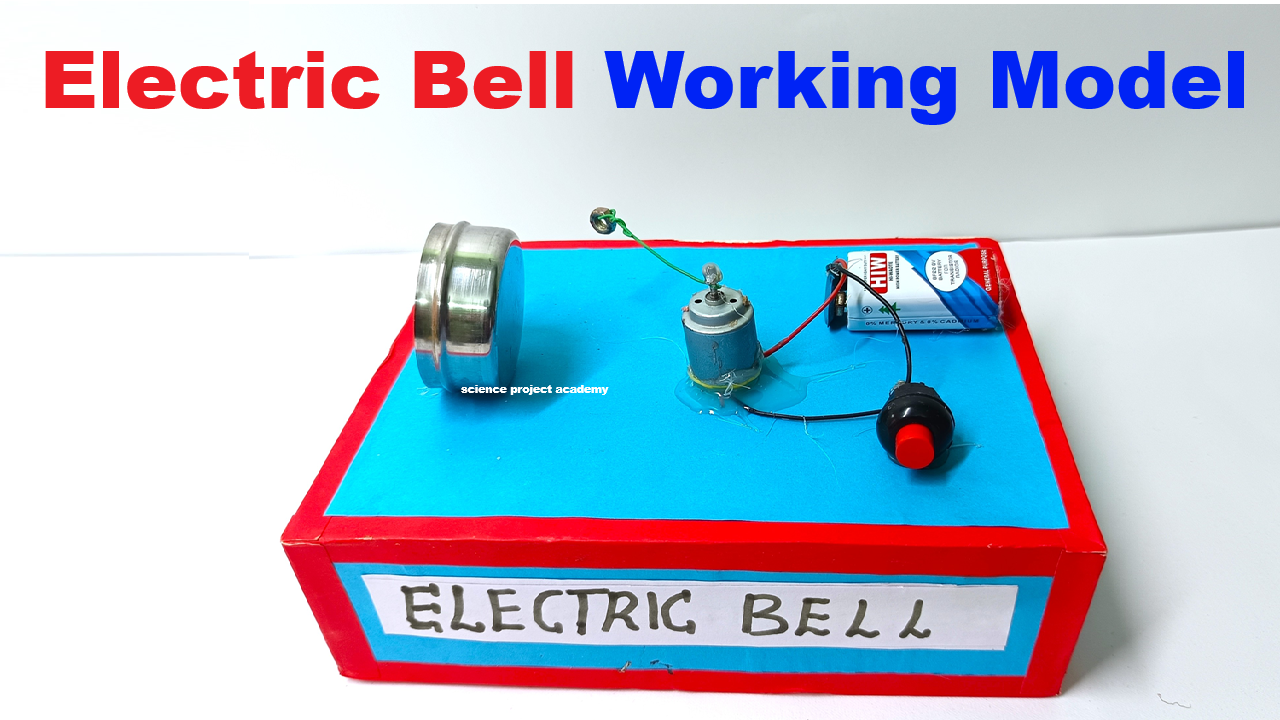Introduction
The electric bell is a practical device based on the principle of electromagnetism and mechanical motion. In this DIY version, we replace the traditional coil-striker system with a DC motor-driven striker.

The motor rotates, and a fixed striker repeatedly hits a steel glass, producing a ringing sound. This version is simple, cost-effective, and highly engaging for a science exhibition.
Concept and Principle
This model demonstrates two scientific principles:
- Conversion of electrical energy into mechanical energy – The DC motor uses electricity from the battery to rotate.
- Production of sound through vibration – When the striker repeatedly hits the steel glass, it vibrates and produces ringing sound waves.
Thus, electricity → motion → sound.
Materials Required
- Steel glass (acts as bell)
- Small DC motor (3–12V range)
- 9V battery with clip
- Switch (on/off)
- Ice-cream sticks or cardboard (for mounting)
- Nut/bolt or pin (for striker)
- Small piece of plastic/wood stick (as striker/hammer)
- Rubber band/tape/glue
- Wires for connections
Video Construction Steps
- Base Preparation – Fix a cardboard or wooden base for stability.
- Bell Setup – Place the steel glass upside down on the base. This will act as the bell surface.
- Motor Mounting – Fix the DC motor vertically near the steel glass using tape, glue, or an ice-cream stick stand.
- Striker Mechanism – Attach a small stick (hammer) to the motor shaft. As the motor rotates, this striker will hit the steel glass repeatedly.
- Circuit Connection – Connect the motor to the 9V battery through a switch for control.
- Adjustment – Place the motor at such a distance that the striker just touches the glass edge while rotating.
Working
- When the switch is turned ON, current from the 9V battery flows to the DC motor.
- The motor rotates its shaft, which carries the striker/hammer.
- The rotating striker repeatedly strikes the steel glass, creating a continuous ringing sound.
- The ringing mimics the working of a traditional electric bell, though here the rotating striker replaces the electromagnet system.
Applications
- Demonstrates conversion of electricity to mechanical energy and sound.
- Can be used as a simple doorbell model.
- Helps students understand practical applications of DC motors.
- Perfect for Inspire Award and exhibition projects due to its simplicity and clarity.
Conclusion
This DIY electric bell model using a steel glass, DC motor, and 9V battery is simple, effective, and creative. It highlights how electrical energy can be transformed into mechanical motion and further into sound. The ringing effect is attractive, making it an excellent exhibit for a science fair.

